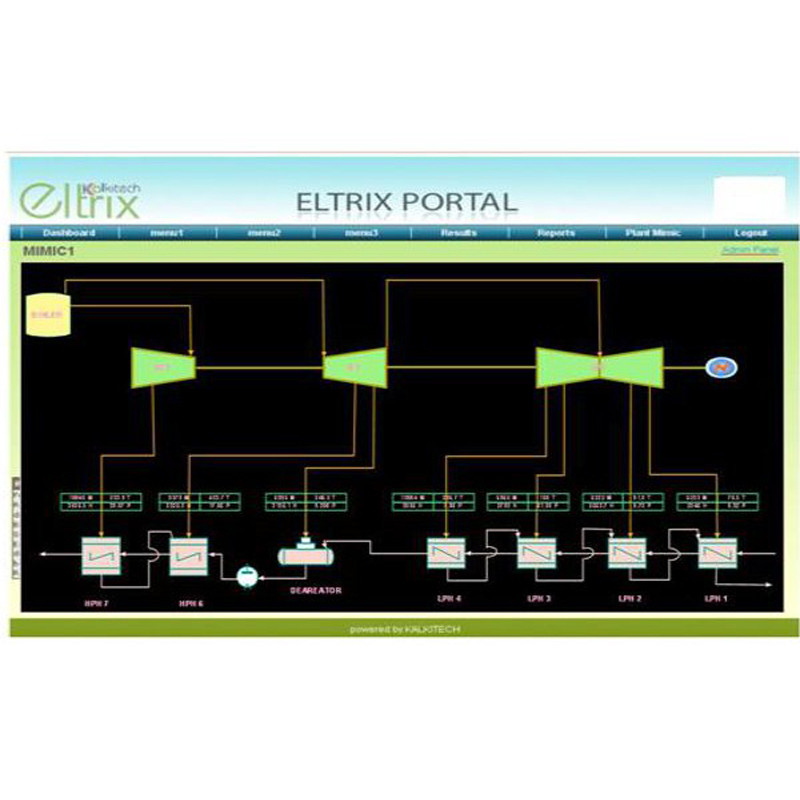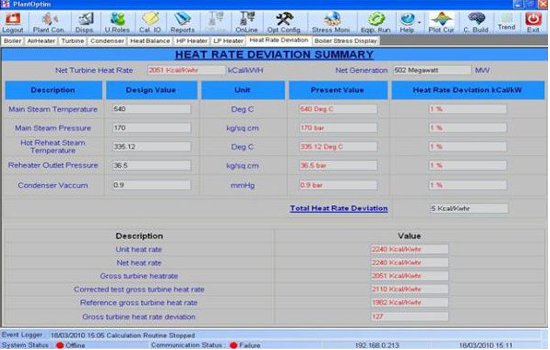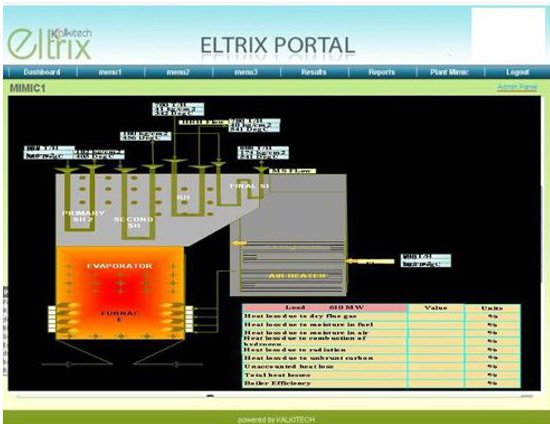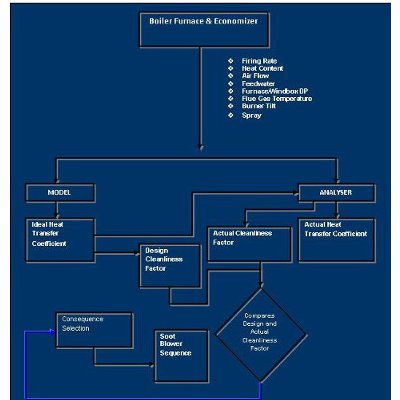
ELTRX POD Module
Part No.: MPKK-ELTRX-POD-Module
Power plants usually do not operate under test design conditions.
產品介紹
ELTRX POD Module
Power plants usually do not operate under test design conditions. Deviations in heat rates and efficiencies from their ideal values and variations in process parameters adversely impact overall plant performance. Any plant operating with incorrect operational set points will impact the efficiency and heat rates, resulting in burning extra fuel for meeting station demand. A US Environmental Protection Agency study reveals that adoption of advanced optimization technologies for heat rate optimization improves boiler efficiency by 1.5% while intelligent soot blowing techniques help enhance it by up to 0.9%. Increasing equipment life and reducing carbon footprint are other factors that drive the implementation of an advanced optimization solution.
Overview
ELTRIX Plant Performance Optimization & Diagnostics (POD) module provides a number of optimization and diagnostics functionalities for gas fired and coal fired power plants. When combined with ELTRIX Plant Performance Management (PPM) module, it offers a complete solution for Performance Analysis, Diagnostics and Optimization (PADO). The various sub-modules of POD include:
Plant Performance Optimization
- System Performance Optimization (SPO)
-
Boiler Performance Optimization (BPO)
- Soot Blower Optimization (SBO)
- Combustion Process Optimization (CPO)
Plant Performance Diagnostics
- Plant Alarm Diagnostics (PAD)
- Water Chemistry Management (WCM)
Plant Performance Optimization
System Performance Optimization (SPO)
The SPO module analyzes and optimizes the performance of various sub-systems in power plants such as boilers, turbines, condensers, feed heaters, de-aerators and auxiliary equipment. SPO optimization maximizes thermal efficiency, lowers emissions, reduces total maintenance cost and improves reliability. The SPO module works in conjunction with other modules such as the performance monitoring module, soot blower optimization module and boiler performance optimization module.
Boiler Performance Optimization (BPO)


Boiler Performance Optimization consists of Combustion and Soot Blower Optimization. The key features of Boiler Performance Optimization module are:
- Continuously tracks the real time efficiency of the boiler system and compares it with the expected boiler efficiency.
- In case of deviations, the system analyzes the root cause of such deviations
- Recommends the optimized set points to improve the boiler efficiency and optimize the fuel consumption.
- Reduces NOX emissions, while adhering to CO limits
Combustion Process Optimization (CPO)
In order to maximize operational efficiency, the fuel consumption rate should match with the generator steam demand. To achieve this state, air and fuel flow must be controlled. Combustion optimization module optimizes the amount of air required for combustion based on fuel properties. Based on an assessment of the stoichiometric condition, the CPO module adds excess air required for complete combustion.
The objectives of combustion optimization are:
- Controlling NOx to a desired set point
- Balancing of combustion
- Maximizing boiler efficiency
Soot Blower Optimization (SBO)

Soot blowing is a boiler cleaning procedure which improves the unit's heat rate. SBO module is specifically designed and developed to compute the level of slag / soot formation in each heat transfer section of the boiler. This module further conveys to the operator section-wise requirements of optimal soot blowing. The benefits of SBO are
- Determines boiler cleaning actions dynamically
- Directs existing soot blowing control systems to take action in real-time to best meet the unit's key performance indicators.
- Works in conjunction with existing soot blowing control and instrumentation system.
- Developed by using adaptive modeling and expert rules thereby improving accuracy
- Initiates strategic soot blowing sequences to minimize heat rate and process steam loss.
- Calculates the actual heat transfer coefficient of each heat exchanger continuously